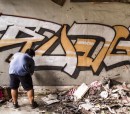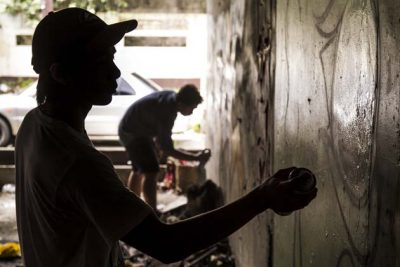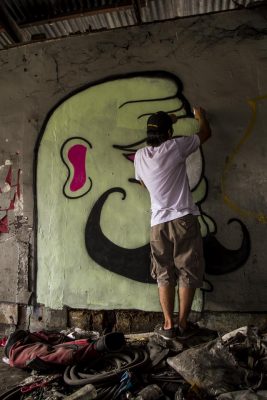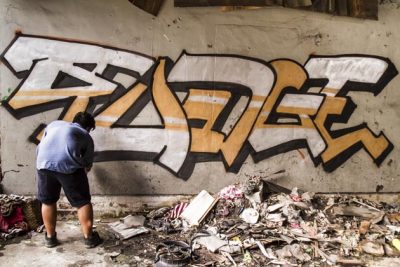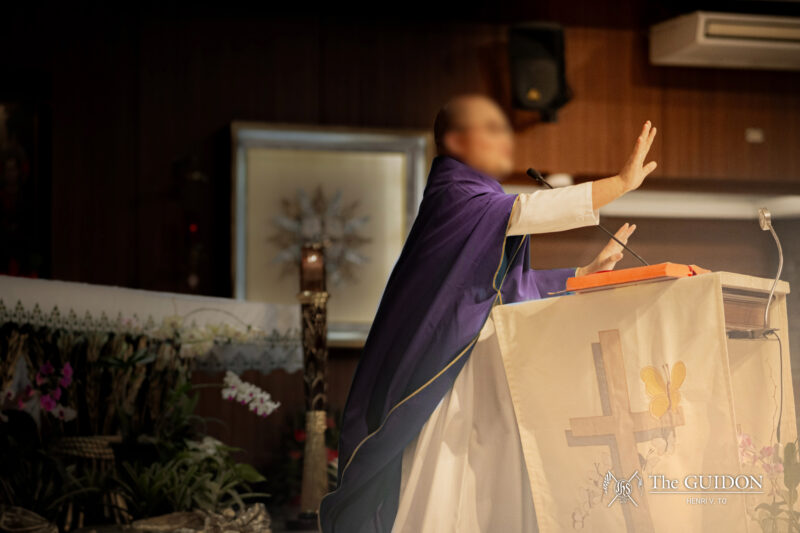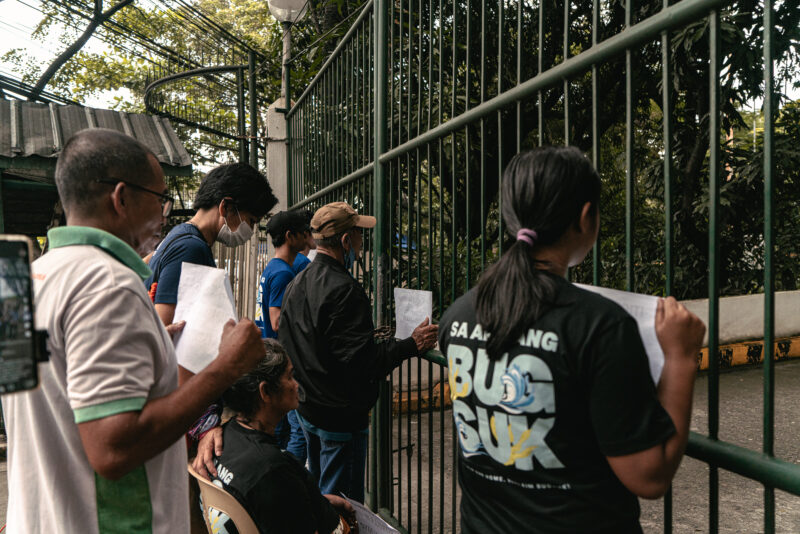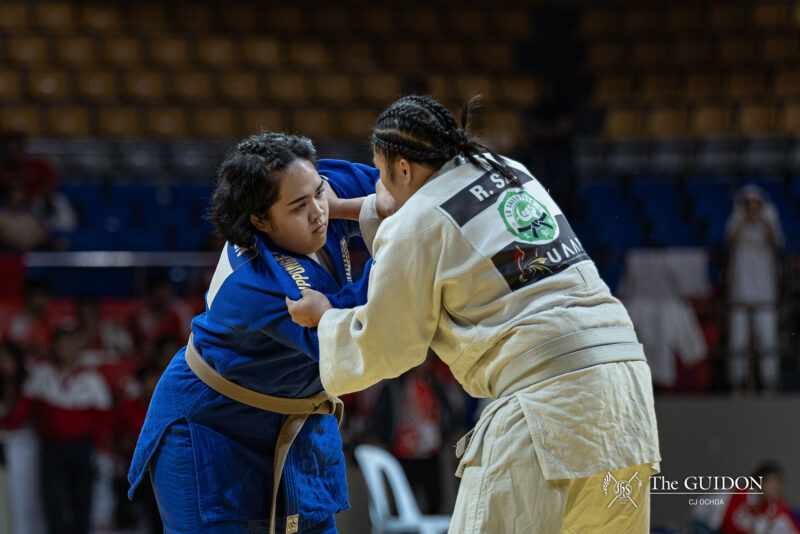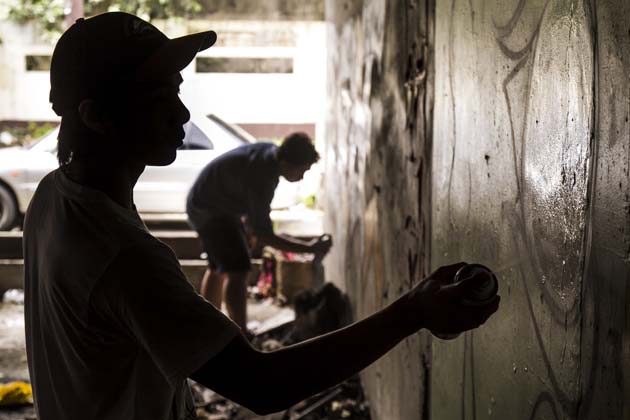
A BLACK CANVAS. Graffiti as a form of art in the Philippines is slowly being accepted into the mainstream. Photo by Miguel R. Santiago
French sociologist Pierre Bourdieu once wrote that only those well educated in the language of art have the true capacity to appreciate and understand it.
However, many contemporary Filipino artists would beg to differ. Armed with tattoo machines, spray paint, and sometimes a lookout or two, the cry of these unorthodox artists is that artistic space isn’t limited to galleries and audiences aren’t shackled by education.
Today, street art and tattoos are not only prevalent, but are widely accepted by art enthusiasts, with or without formal training. Long gone are the days when inked skin was sinful and graffiti was disrespectful defacement.
Pinoy, unconventionally
Tattoo and street artists have had to deal with ill repute in the past. Contrary to popular belief, however, they are fueled by much more than the desire to vandalize property and mar skin.
For renowned tattoo artist Tatay Nero Nievo, the appeal of his work lies in its longevity. Though he started off as a commercial artist, he was entranced by the idea that ink on skin lasts as long as their wearers do, whereas some other mediums are significantly more short-lived.
His love for tattoos also draws from the fact that they are a very personal art form. The nature of their canvas keeps him inspired, as he claims that “araw-araw inaalagaan, araw-araw tinitingnan, araw-araw ipinagmamalaki [ang tattoo]. (Tattoos are taken care of, looked at and bragged about every day.)”
Similarly, members of the group Ang Gerilya were brought together by their shared love for their underground craft. Though what first got them going was their desire to reinstate the prominence of Filipino comics, they have come to be more recognized for their street art.
But unlike Tatay Nero, their street pieces last no more than a few weeks, and the materials don’t come cheap. So why engage in graffiti? They say that there’s still fulfillment to be found in their work, as it’s a way for them to make their pieces accessible to everyone.
“Mas maganda ang feeling na… kinocommend ka ng mga common people sa ginagawa mo kaysa sa mga palakpak na makukuha mo sa gallery (The feeling of having the common people commend your work is better than the applause you get at a gallery),” says street artist Zap, who, together with all the other members of Ang Gerilya, works under a codename.
“That’s the ultimate test of your skill. In a gallery, the people are usually educated and know how to appreciate art,” adds Jano, in a mix of English and Filipino. “But if you’re applauded by the common people, even a street kid that tells you, ‘Kuya, ang ganda ng gawa mo (Your work is beautiful),’ I think that’s better for us.”
When engaging in their crafts, neither Ang Gerilya nor Tatay Nero forget their cultural heritage—there lies a touch of national identity in all that they do. The artistic practice may be partly foreign in origin, but the influences are always close to home.
In their art, Ang Gerilya commemorates historical events and local heroes, inserts socio-political commentary, as well as imbues values distinct to Philippine culture. Similarly, Tatay Nero admits that though tattoo artistry is practiced across the globe, the methods and designs he uses are uniquely Filipino.
As Zap says in a mix of English and Filipino, “We are Filipino artists, so the work that we do shouldn’t be pretentiously foreign—it should be Filipino.”
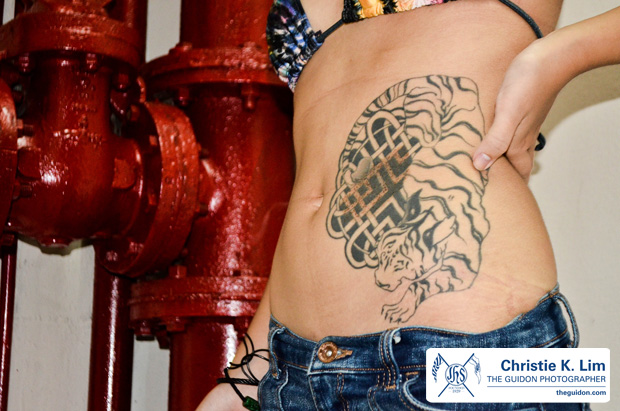
ART ON SKIN. Information design senior Pam Celeridad designed her own tattoo. Photo by Christie K. Lim
Ateneo inked
It’s no surprise that unconventional artists like Tatay Nero and Ang Gerilya are thriving in today’s art scene, but the same cannot be said of the environment within the Ateneo. From the outside looking in, the school exudes a strictly no-nonsense aura; thoughts of it housing such artists are almost laughable.
Beneath its serious exterior, though, the Ateneo is home to a number of those who keep tattooed skin under wraps and spray cans hidden away.
Take Pam Celeridad, an information design senior, who proudly wears a large tattoo of a tiger encircling a Buddhist auspicious knot on the left side of her torso. Fascinated by the beauty of the art form since her early teens, she got it at 17 and intends to add more in the future.
“My love for the art even escalated to tattoos being a main influence in my paintings and artworks,” says Celeridad, who conceptualized the design herself. “My firsthand experience with the tattoo industry opened my eyes and made me realize the endless possibilities of the medium of skin.”
On the other hand, management sophomore Miggy Antonio sees his work with Artsy Fartsy Krew (AFK), a group of local graffiti artists, as “art for art’s sake.” Though he’s aware that other graffitists have socio-political agendas, his motivation stems more from the intent to take the beautification of the streets into his own hands.
He mentions the MMDA street art project with a mixture of amusement and indignation. “I don’t really see the point. They claim that they’re doing that to beautify [the streets] but it’s not really beautiful, honestly.”
More than livening up the roads of Manila, he also uses his pieces to create awareness of his craft. His hope for the Ateneo community is that Ateneans’ eyes will be opened to the thriving scene of underground art.
Paradigm shift
It appears that people’s eyes are indeed starting to open to forms of art with more subversive origins. Street art and tattoos, as unorthodox as they may be, have garnered a sort of near universal acceptance, if not appreciation, from the various sectors that comprise modern Philippine society.
Once viewed as nothing more than the mark of confused and excessively hormonal teenagers, underground artistic mediums have developed through time to become the celebrated and evocative art forms they are today.
Celeridad believes that tattoos are not so much marks of rebellion, indecency and delinquency as they are expressions of the purest form. In her words, “I regard tattoos as one of the most sincere art forms [or] expressions today.”
However, the influence of street art and tattoos isn’t confined to the niches of the youth; these unconventional mediums have also developed a respectable following among other societal groups, from local residents to the authorities.
According to Zap and Jano, “Dyan mo rin makikita na kahit yung normal na tao, na walang background sa art, na marunong silang mag-appreciate ng art (This shows that even normal people, who do not have a background in art, actually know how to appreciate art).”
Even local government officials are beginning to see street art and tattoos in a more favorable light. According to Antonio, local government units have provided graffiti artists with venues to work on freely, such as the now thickly painted skate park in Intramuros, Manila.
Lasting impressions
When it comes to art, no one is uninitiated—and this is especially true in the case of graffiti and tattoos. As Tatay Nero says, underground art forms invade human harmony and shake up the status quo.
With society serving as the focus and the human mind acting as the allegorical canvas, it can be seen that we are all inexplicably caught up in a meta-social movement that is redefining the art scene as we know it.
Pierre Bourdieu, in a way as dignified as possible in such a tight space, would roll in his grave.
- Photo by Christie K. Lim
- ART ON SKIN. Information design senior Pam Celeridad designed her own tattoo. Photo by Christie K. Lim
- A BLACK CANVAS. Graffiti as a form of art in the Philippines is slowly being accepted into the mainstream. Photo by Miguel R. Santiago
- Photo by Miguel R. Santiago
- Photo by Miguel R. Santiago

